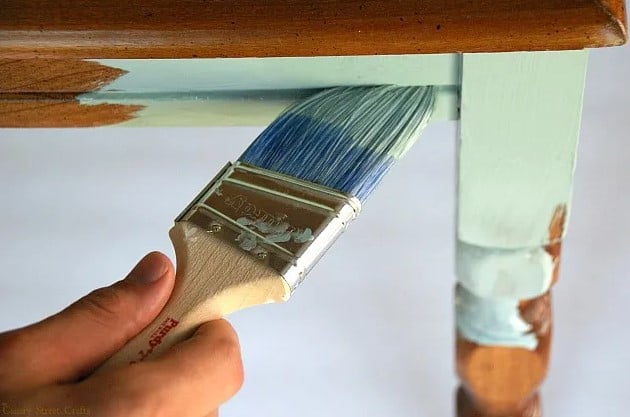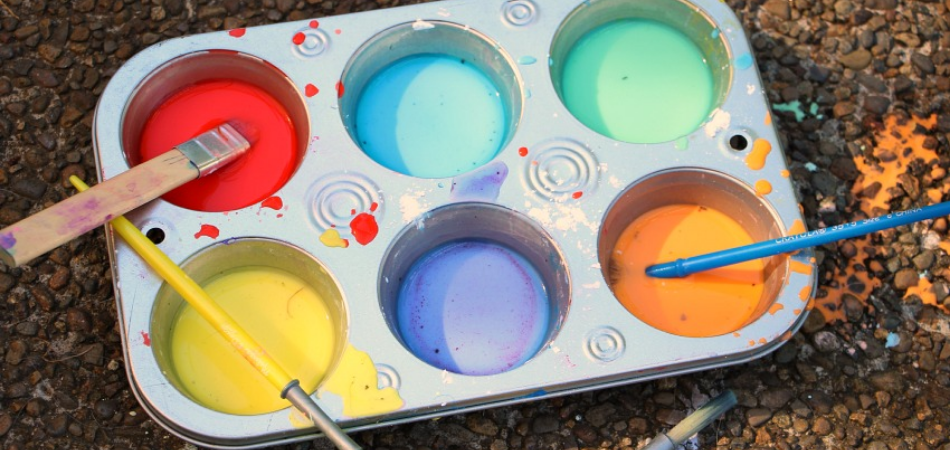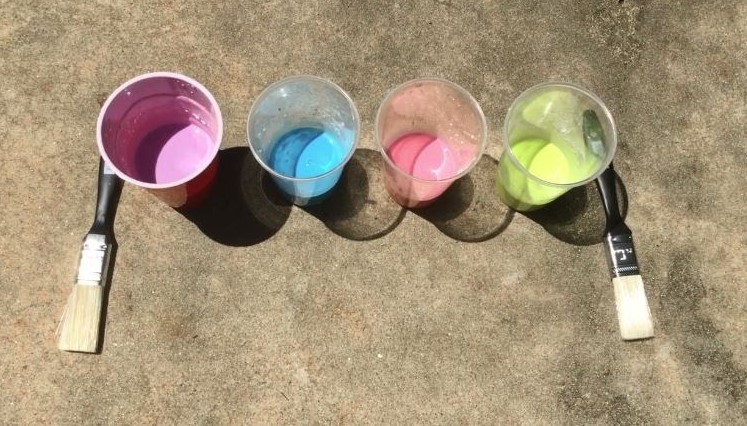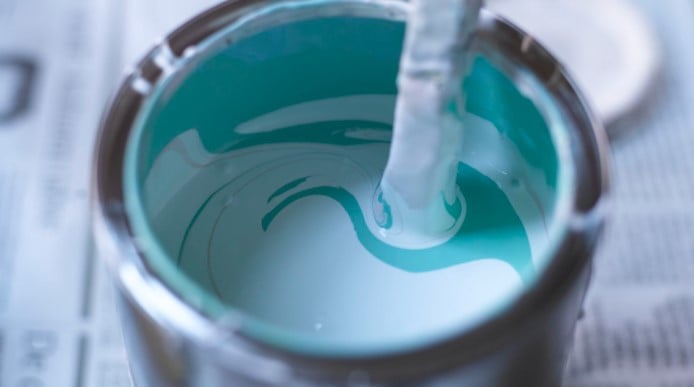Randy Charles is the owner of PaintCentric.com, a website dedicated to providing information, tips, tricks, and news about all things paint. With over 10 years...Read more
Instead of spending money on store-bought chalk paint, try to learn how to make chalk paint without plaster of Paris in a matter of minutes and save both time and money. Chalk paint is a favorite of many of us and it is a wonderful experience. Why? Because it requires little to no preparation, which is interesting to busy people like me.
In addition, the matte finish gives it a lovely vintage look. I understand why so many people swear by chalk paint after trying so many distinct brands. However, I preferred making my DIY chalk paint to using “brand-name” chalk paint.
Key Points:
- It is easy to make at home, and it is inexpensive.
- Color options are virtually limitless. You can choose any color of latex paint since you are preparing your own chalk paint.
- Custom-made chalk paint is a possibility. When it comes to the thickness, you may do whatever you want with it.
What is Chalk Paint?
Chalk paint is thicker than normal paint because it contains calcium carbonate, a thickening ingredient. It is not to be confused with chalkboard paint, which is intended to create a surface on which you can write with chalk in your living or working area, but to achieve the “distressed” or antique impression you may find on older pieces of furniture.

In comparison to regular paint, chalk paint can adhere to a wide range of surfaces and is typically more expensive. It’s good news for interesting art and craft lovers looking for affordable and stylish methods to decorate their houses as producing your DIY chalk paint is both simple and exciting to do!
Chalk paint is an incredibly adaptable paint that performs well on a wide variety of surfaces, as anyone with even the tiniest knowledge of home improvement tasks can attest. Using sandpaper to sand the paint after it has dried is a common method for creating an “aged” look on wooden surfaces.
Other advantages of using this product include the ease with which you may prepare your surface for painting but sanding the surface before painting can improve the adhesion of paint.
Why Make Your DIY Homemade Chalk Paint?
There are just reasons for making homemade chalk paint.

Reason #1 – It is a bargain. Expensive chalk paint from a brand name would set you back to anything from $34 to $36 per can. Making your own at home is a less expensive alternative.
Reason #2 – The variety of colors available is infinite. Because you are making your chalk paint, you are free to use any color of latex paint you like.
Reason #3 – In general, DIY chalk paint dries faster than commercial paints. The less time you must wait for the paint to cure, the better. In addition, the more tasks you do, the better.
Reason #4 – Despite its little weight, it is quite resilient. The DIY version of chalk paint is far more durable than some of the store-bought types. This could be because homemade chalk paint contains certain components.
Reason #5 – Chalk paint can be made to your specifications. You have complete control over how thick or thin it is.
Can You Make Chalk Paint Without Plaster of Paris?
Among DIYers and crafters alike, chalk-paint is prohibitively pricey. The wood could be used for a variety of projects around the house, including the construction of walls, furniture, and kitchen cabinets. People prefer them because of the ease with which they can be polished or sanded to give them an aged impression.

People who enjoy using these paints, however, are not the only ones who do not appreciate spending additional funds when there are so many other affordable options out there to choose from. That is where the idea of making your DIY chalk paint sprung up and can be successful.
It is possible to make your DIY chalk paint at home if you do not want to spend the money on “name-brand” products. Plaster of Paris is used in some of these recipes, but others do not. If you are working with larger batches of paint, grout, or plaster of Paris, be aware that the materials will set much more rapidly.
This means that if you intend to save paint for future use, calcium carbonate is the best option. Note that latex paint may minimize the color you add to your combination when you choose your paint and make light. As a result, we advise picking a color that is one shade darker than what you want to paint with.
What Does Adding Plaster of Paris to Paint Do?
Additives like plaster of Paris can alter the colors of your paint and should be considered when selecting a shade. It is possible to undertake a wide range of projects once you get the hang of it. In addition to casting jewelry, pendants, and embellishments, plaster of Paris is also used to construct sculptures and decorative things. You can also use it to craft things for the home, like crafts and decor. Instead of calcium sulfate hemihydrate, use flour as the primary ingredient in making plaster of Paris at home. You can achieve this by following the steps below.
- Step 1: In a large bowl, whisk together two cups of water and three cups of all-purpose white flour until smooth. As soon as you have poured the plaster of Paris into the mold, strike the mold against any flat surface to let any trapped air bubbles rise to the surface. Plaster of Paris can be mixed with paint, but it must first be dissolved with hot tap water.
- Step 2: Put water, plaster of Paris, and mix very well together in a bowl, and the mixture must be entirely smooth. Then, add latex paint (1 cup), to the mixture and thoroughly mix them. A six-drawer dresser can be painted with this amount of chalk-finish paint. It hardens in 20 to 30 minutes, it’s non-shrinking, and dries white.
- Step 3: After drying, you can use any oil- or latex-based paint on this hobby and craft mixture. If you have had a rip in your plasterwork, DAP Plaster of Paris for craft and Hobby can help patch it up.
The moment the solution is free of clumps and has a nice texture, add some acrylic paint or poster paint to make colorful Plaster of Paris.
How To Make Chalk Paint Without Plaster of Paris?
You do not need a Ph.D. in chemistry to make your DIY chalk paint, and it just takes a few minutes to combine all the materials. A thickening agent and water may be required depending on the type of thickening agent you select to add to your latex paint. Making your Homebase DIY chalk paint without plaster of Paris can be done in a variety of ways, and the ideal procedures vary according to your preferences.

These three recipes outline the essential processes needed to make a paint of your preferred consistency and texture that does not contain plaster of Paris. Rather than relying on the advice of others, the best strategy for making chalk paint is to experiment with a few different procedures and pick the one that works best for you.
1. Baking Soda
Although the ratios in this approach are distinct from those previously stated, you will need to follow the same procedure with this recipe as with the calcium carbonate process as described above. To attain the right consistency, combine 2/3 cup paint with 1/3 cup baking soda.
Surface preparation or priming is not required. Because of its grittier texture, this paint is not recommended for use on flat surfaces. However, you can distress the paint with sandpaper once it has dried, if desired.
2. Calcium Carbonate
To make this dish, simply combine one part calcium carbonate with two parts latex paint (chalk). However, you should be able to acquire calcium carbonate powder online if you encounter difficulties in getting calcium carbonate. Cacao carbonate is an excellent additive to latex paint despite its drawback. If it is well sealed, the chalky finish lasts for a few days, and it is quick drying. When it comes to making your DIY chalk paint. To minimize cracking and promote adhesion, it is recommended that you use talc in your recipe. In this recipe, you will find the following ingredients:
- Four tablespoons calcium carbonate (chalk)
- One tablespoon talc
- A cup of latex paint, and
- Water
Add talcum powder and calcium carbonate to the paint mixture. A mixer or by hand is used to blend these materials for 2 – 3 minutes until the paint is smooth enough. Stir in a small amount of water when it is too thick for your taste.
To thin or thicken your paint, repeat this step as many times as necessary.
3. Un-Sanded Grout
The final way for making chalk paint is this one. Two cups of un-sanded grout and one cup of paint should be mixed until it is smooth. In addition to having an unpleasant odor, grout hardens too quickly so quickly that you may notice your paint thickening as you are painting with it.
The downside of this is that you will have to invest considerable time and effort re-mixing it before each use. We do not recommend using this recipe because of these reasons, and instead, suggest trying all the other techniques first.
Frequently Asked Questions (FAQ’s)
What Are the Right Ingredients for Making a Home Based Chalk Paint?
A thickening ingredient, such as chalk (calcium carbonate), plaster of Paris, or grout, may be used as a basis for chalk paint.
Are DIY Chalk Paints Equal to Store-Bought Chalk Paints?
It is common knowledge that store-bought paint is more durable, but that is only true if you are using a certain DIY chalk paint recipe and brand. Many people choose to make their paint since it is significantly less expensive.
Are There Any Disadvantages to Using Chalk Paint?
It is more difficult, if not impossible, to get a distressed look with normal paint, but with chalk paint, you can obtain any look you want. Since the homemade chalk paint is thicker, this is the reason. As a result, the answer to this question can be NO! This paint has excellent adhesion capabilities; thus, it may be used on a variety of different surfaces with little to no surface preparation.
Chalk paint, on the other hand, is usually more expensive than normal paint. You can avoid this by manufacturing your own, which is much less expensive than buying pre-made. Making your chalk paint is a snap.
Do You Know Why Chalk Paint is a Good Choice for Today’s Artists?
Chalk paint is a unique sort of paint that can be used to give your surfaces and items an aged, yet beautiful appearance. Latex paint is used as a basis, but a thickening agent is added as an additional ingredient, which enables sanding to create the “distressed” look when applied. In no way should the term “chalk paint” be confused with “chalkboard paint.”
What Makes Chalk Paint Different from Regular Paint?
Chalk paint has a thicker consistency since it contains an ingredient that alters the paint’s viscosity. The finest chalk paint formula you can discover may be adapted to meet your needs, allowing you to control the texture of the paint while still getting a vintage look on the thing you are painting.
Conclusion
I am sure you now know how to make chalk paint without plaster of Paris. Refurbishing old furniture with a coat of DIY chalk paint can be an excellent idea. Adding plaster of Paris into the mix is one of my preferred methods, but there are a variety of alternatives. To produce and utilize your chalk paint, you will only need some paint materials and tools from your local paint store.
If you are sick of wasting money on pricey chalk paint, try this method to make your own using ingredients you already have on hand. You will be astounded by the outcome. Making it at home is quite simple, and it is a cost-effective method to reap the advantages of store-bought brands at a fraction of the price.

Randy Charles is the owner of PaintCentric.com, a website dedicated to providing information, tips, tricks, and news about all things paint. With over 10 years of experience in the painting industry, Randy has become an expert in the field and is passionate about helping others learn more about painting. He has written numerous articles on the subject and is committed to providing accurate and up-to-date information to his readers.
